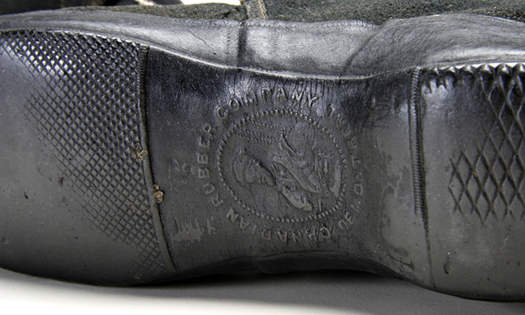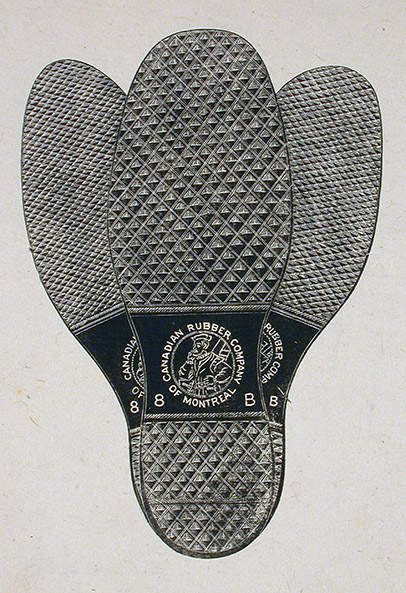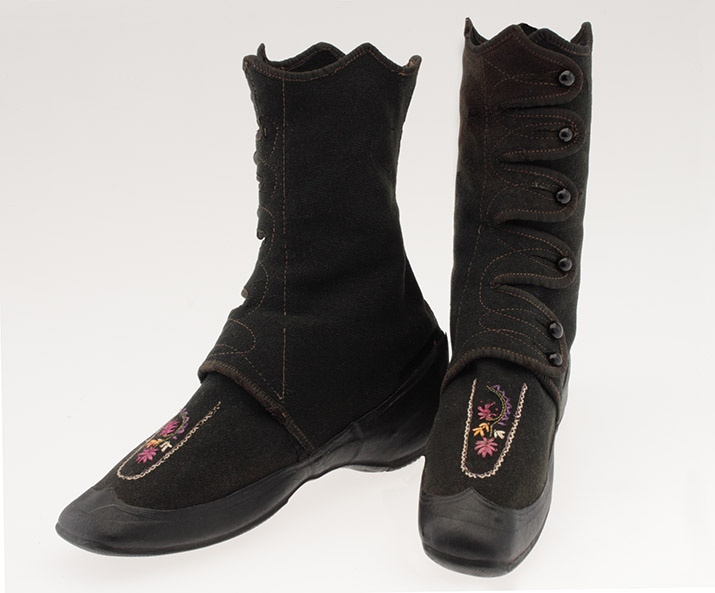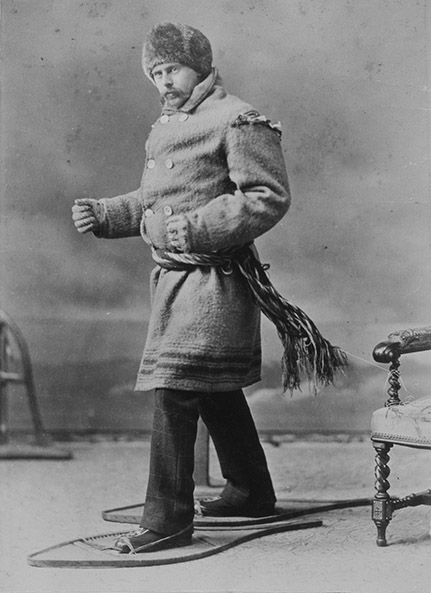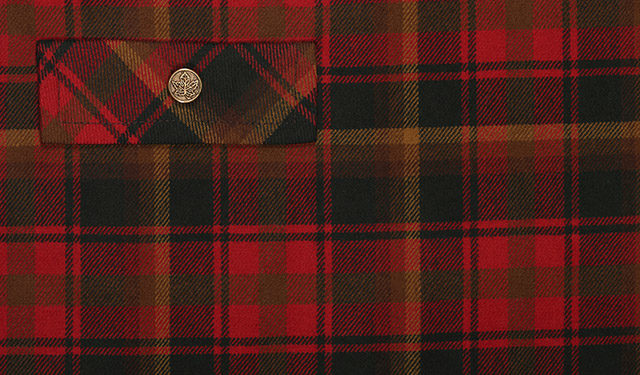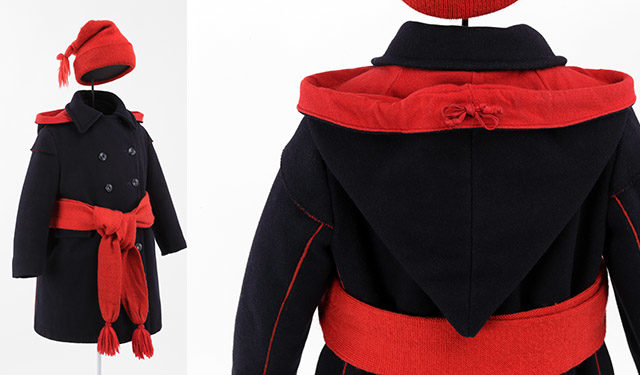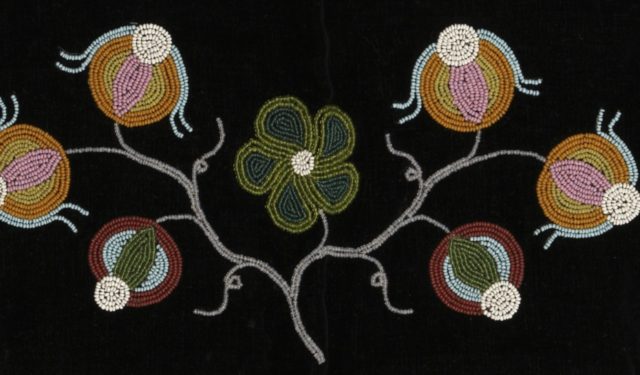A Fascinating Pair of Boots!
The Dress, Fashion and Textiles collection contains a pair of boots noteworthy for its materials and cultural origins.
October 16, 2017
These girl’s boots have been a source of fascination since they first arrived at the McCord Museum in 2006. Although found in a house in Boston, they have a firm Canadian connection with the logo of the Canadian Rubber Company of Montreal stamped on the sole.
Stylistically, they appear to date from the late 1860s or early 1870s, making them arguably the earliest known labelled item of Canadian manufactured dress. Interestingly, the Museum’s holdings of prints by wood engraver John Henry Walker contain an image of an almost identical logo on the sole of a boot with similar treads!
Rubber was still a relatively new material for footwear in the 1860s, and offered the possibility of a waterproof sole. The Canadian Rubber Company, registered in 1866, was the first of its kind in the country. Initially it manufactured only shoes and boots, but went on to add other products such as fire hoses and tires. Early rubber deteriorated quickly, and there are few extant examples of rubber materials from these dates. We are fortunate that these boots survived.
These boots feature another exceptional material. Microscopy has confirmed that the embroidered motif on the wool uppers is moose hair! It is visually similar to embroidery on extant Huron-Wendat moccasins from that time. The Huron-Wendat in Lorette, today Wendake, were prolific producers of embroidered goods for the tourist trade in the nineteenth century. However, these goods were only a small part of their commercial activity as they manufactured moccasins, snowshoes, and boots on an almost industrial scale.
What can we deduce from this embroidery on boots that were clearly of industrial manufacture? These boots tell us that Aboriginal women embroidered quantities of these wool uppers for the Canadian Rubber Company’s Montreal factory. In other words, Huron-Wendat women worked in a putting-out system of mass produced goods, not just small cottage-industry settings.
Canadian Rubber was not their only such client. In a directory of businesses in New Haven, Connecticut, published in 1886, the L. Candee Rubber Company boasted of a product whose description is similar to the McCord boots: “The ‘Indian Gaiter,’ vamp embroidered with moose hair in bright fadeless colours, the work of Canadian Indians, are unequalled in beauty and comfort.”
Further research provides clues to the way such footwear was used. In her journal for November 17, 1872, Lady Dufferin described how her party dressed for snowshoeing: “We all wear moccasins on our feet; they are of cloth with indiarubber soles, and generally with a flower embroidered in colours on the toes.”
Knowing that a Governor General’s family wore them snowshoeing, we checked our Notman Photographic Archives to see if others did as well. We found Mr. Dudgeon, in an almost identical pair for his portrait taken in 1876.


